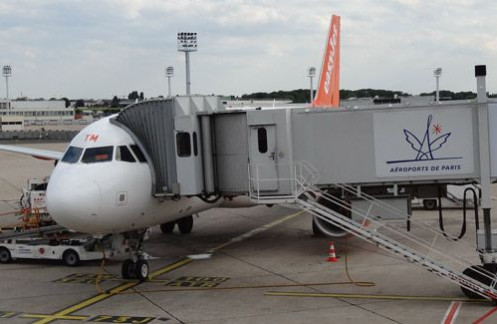Christine CHAPUISOrganisation Consultant, Distribution Channels Centre, SNCFWe can now locally control the opening of ticket windows with Océane to reduce customer waiting time while controlling costs.
The new French rail price schedules, set up in the last few years, and the constant increase in passenger traffic, have resulted in strong growth in activity in all SNCF distribution channels, whether SNCF boutiques, on-line or phone sales, ATMs and stations. Railway stations are still the place preferred by passengers for ticket purchases, and for SNCF there are many, sometimes contradictory, objectives.
How to manage this growth as part of a cost control rationale, while trying to reduce waiting times at the ticket windows?
In order to improve passenger service, SNCF had already set up a new unique sales area concept in some railway stations, that grouped all distribution services (information, trip preparation, same-day departures). This deep structural change in station distribution entailed various re-organisations, e.g. greater versatility of employees, number of windows open to the public, and when. The Paris Montparnasse railway station was confronted with this issue in 1999 when it had to face a strong increase in passenger traffic (departures of the Paris-Nantes TGV every 30 minutes). They already had a tool, based on CCTV data in the stations, that was used to study the flow of customers at the windows, then modeling the flows. However, it was costly and impractical, and became poorer and poorer at sizing the window operations. Another alternative was to base the opening of windows on pure sales criteria, though this approach was insufficient in relation to SNCF’s quality of service objectives.
In 1999, SNCF entrusted Eurodecision with an initial study to help it size the number of necessary windows for the Paris Montparnasse railway station, while taking into account cost-efficiency and quality of service constraints.
Being satisfied with the results obtained and wishing to expand the field of application of the study, SNCF then wrote more ambitious specifications, the objective now being to design a tool that would be used both by the Intercity Transit division and by the regional correspondents in charge of distribution, so that each region could independently control its distribution locally. These correspondents also played an organizational consulting role as they were in a good position to conduct studies with the region’s railway stations.
Building on its expertise in optimization and its good knowledge of the field, Eurodecision was awarded the contract and the Océane (Optimization of Sales Area Design and Efficiency Improvement) project started in June 2000. The software solution is entirely written in C++ and is based on software components used in the transport industry: Eurodecision’s LP-Shift module to optimize employee daily workload coverage and the ILOG Cplex linear programming solver.
Based on data collected over a full week by timers in the railway stations (collecting waiting time at windows, and transaction time), and sales information recorded in the SNCF database, Océane is capable of reconstituting the incoming flow of customers in the sales area.
Océane then calculates and displays the window workload curve according to the waiting time criteria selected. The number of windows to open to absorb the flow is expressed in 15-minute steps, over the entire period of the sales area’s business hours for every standard day of the week studied. The curve clearly shows the fluid periods and critical periods. But the software always offers the person in charge of distribution the possibility of locally adjusting the number of windows to open so that an acceptable compromise can be achieved.
This task can be undertaken once or twice a year in railway stations to adapt the organisations to service changes (winter and summer), not by repeating the timing operations, but by using the initial base data weighted by SNCF data (volume of customer transactions) for the new week studied. Océane can also be used in railway station renovations to determine the number of windows to install. The software is particularly useful for running simulations concerning passenger traffic growth.
Océane uses employee data (full time, part-time, temporary personnel, etc.) and previously obtained results to optimize the coverage of the windows by the ticket agents. Rotations are currently determined manually.
Océane is being tested on the pilot sites of the Austerlitz railway station in Paris, and in Lyon and Bordeaux, and will soon be deployed to 24 locations, (within the Intercity Transit division and in the 23 regions that make up the SNCF network). This will represent significant progress for railway stations that had no window control tools, except for occasional timing operations. “We now offer them a flexible, user-friendly tool for reducing customer waiting time while controlling their costs.” Christine Chapuis, Organisation Consultant at the Distribution Channels Centre, and Océane Project Manager.






